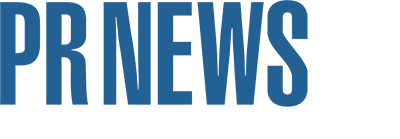While live focus groups have been around since the 1940s and really came of age with marketers in the 1950s, they are a lively subject for debate among PR executives. To some they are like a crapshoot—either a way to look inside the hearts and minds of stakeholders, or a group of people ready to implode into chaos, wasting precious time and money.
But there’s another focus group tactic that bears scrutiny: the online focus group. Instead of rooms with one-way mirrors, online platforms allow observers to interact in real time with small or large groups, ask closed or open-ended questions, engage subjects in discussions and test just about any kind of message media.
It’s a technique—and a technology—that should be used more in PR, says Jennifer Scott, managing director of insights and research at Ogilvy PR. Scott, who assists clients with online focus group efforts, cites a number of reasons why the digital platform is her preference:
• Speed: Studies can be deployed and completed in a matter of days, with transcripts instantly available for review.
• Cost: Because moderators and clients do not need to travel to far-flung facilities, savings in both time and cost can be significant.
• Geography: Diverse and wide-ranging groups of participants can be assembled for a single project easily and without requiring travel.
• Candor: Because the online setting affords participants a degree of privacy, they are often much more comfortable discussing sensitive topics and sharing unpopular opinions than they would be in a traditional face-to-face setting.
• Access: “We can talk among each other in real time, in a backroom environment that works very well,” says Scott.
• Relevance: Many respondents are comfortable with interactive communication, particularly those under 55, says Scott, and embrace the opportunity to participate in research using online techniques that seem less intrusive than traditional methods.
And, the technology is such that as a facilitator or observer, the experience is very close to a live session. As for the technology, Scott uses Washington, D.C.-based research and consulting firm Stratalys, but a quick online search yields other providers such as ActiveGroup, Authentic Response and Goodmind, among others.
Patti Reilly, VP of communications at the Association of American Railroads, also recognizes the effectiveness of online focus groups. Having used live groups for years in evaluating campaigns both pre- and post-launch, “online is where we’re headed,” she says. “It’s a very valuable tool.”
FOR AND AGAINST
Reilly says sheer numbers are one reason online is advantageous. “In a live setting, it’s a task to get eight people around a table for two hours,” she says. “Online we can easily have 30 to 60 people on for 90 minutes.”
But what about losing the personal touch involved in a live focus group? “As we evolve as a society to include online tools as more and more of day to day, it’s very natural to communicate this way,” says Reilly. “You still have a moderator asking questions, and the moderator can still probe almost like one can in a live setting.”
Since Ogilvy almost always uses text communication only (not video), Scott often hears the argument about the inability to observe body language. It’s overrated, she says. “A lot of times body language is more about the group dynamic,” says Scott. “Participants convey disgust, happiness and can get very emotional just by being in a room together.” Online can dispel those unrelated emotions and allow subjects to concentrate on the topic, she says.
In Reilly’s opinion, online prevents one person to dominate the session, as she’s often seen in live focus groups. “That can waste valuable time,” she says. Another advantage to online focus groups is the ability to quickly eliminate a distracting participant from the session. “One click and they’re done,” says Reilly.
One organization that has tried an online session but prefers another research method is insurance company Aflac. “You really have to have the right business objectives aligned to the right platform,” says Laura Kane, Aflac's VP of external communications. “For us, online surveys are more effective.” (See sidebar for details.)
EFFECTIVE RESEARCH
The proof of the effectiveness of online focus groups, says Scott, is in the perceptions gained. For example, she recently headed two sessions for the American Automobile Association, which was planning a campaign to reach the children of parents who are getting too old to drive. “AAA wants to support the boomer kids who have some difficult decisions to make on this issue,” says Scott. The sessions were very intense, she says, and despite the digital divide, the moderators easily sensed the participants’ emotional reactions to the topic. As a result of the sessions, AAA took those findings and launched a successful integrated campaign aimed at the boomers.
While Reilly tests specific campaigns before and after launch, she also ascertain broader perceptions from the groups. “I can compare the railroad industry with other modes of transportation, like trucking,” she says. “I want to know what they are thinking of our group compared to others.”
STIMULUS RESPONSE
Even with such successful outcomes, Scott concedes that online focus groups aren’t for everyone. If you’re a company testing a cheeseburger, a live session is the way to go. Yet Ogilvy’s online groups have responded to a variety of stimuli: print, video, music and company logos.
“We can ask individually what they think of that logo, without them seeing anyone else’s response,” says Scott. “Then we can switch to a discussion room where they can talk (or type) amongst themselves and we can get a huge amount of data very quickly.”
Reilly is a believer in the process. “We may lose some personal touch, but the participants are really into this,” she says. “It’s a platform that more communicators should look into.” PRN
CONTACT:
Jennifer Scott, jennifer.scott@ogilvypr.com; Patti Reilly, preilly@aar.org; Laura Kane, lkane@aflac.com.
